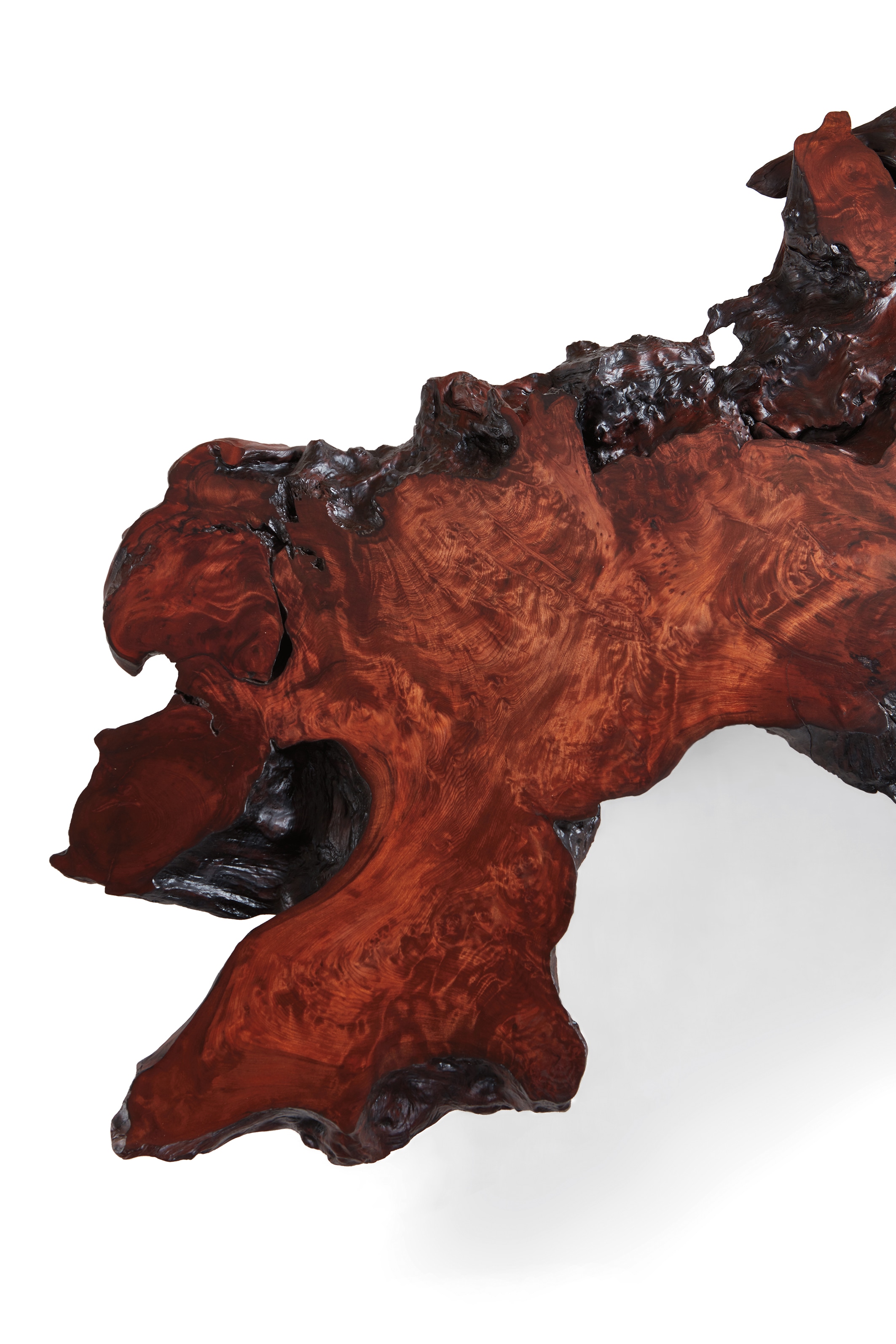





231Σ
George Nakashima
"Arlyn" coffee table
Full-Cataloguing
In contrast to his earlier work, his designs during the 1970s and ultimately, the 1980s, focused more on opulent grains of less common woods and burls, and emphasized the individual qualities of each specimen. His designs were at this point largely determined by the wood itself and how to better accentuate and exploit the inherent nature of the material. Nakashima’s gravitation toward expressive grains included redwood trees because “they produce extraordinary slabs of wood with spectacular figuring and great interest” (Soul of a Tree, p. 88). Imperfections caused by disease, infestation or branch growth, which were roundly rejected by large manufacturing firms, were the objects of Nakashima’s affection. In each tree these imperfections told a story: “There is life there, and it is at odds with the lifelessness of high technology and mass production” (Full Circle, p. 102).
The present lot demonstrates this important shift in Nakashima’s career. The base of the table, a style he only occasionally employed in his work of this period, was never illustrated in his studio’s catalogues. It showcases his architectural training with intersecting planes contrasting sharply against the table’s elaborate top. The top exhibits an overt appreciation for nature, its deep coloring the result of the root’s contact with mineral-rich groundwaters and its complex surface the result of the meticulous preservation of centuries of environmental changes. While all of Nakashima’s tables are unique due to the individual nature of his chosen slabs, the present lot very closely resembles a design from two years earlier, which remained in George and his wife Marion Nakashima’s personal collection and continues to reside at the Nakashima studio in Pennsylvania today to serve as testament to his life’s work.
George Nakashima
American | B. 1905 D. 1990Working out of his compound in rural New Hope, Pennsylvania, George Nakashima produced some of the most original and influential furniture designs of the post-war era. Nakashima aimed to give trees a second life, choosing solid wood over veneers and designing his furniture to highlight the inherent beauty of the wood, such as the form and grain. To this end, his tables often feature freeform edges, natural fissures and knot holes. Nakashima was an MIT-trained architect and traveled widely in his youth, gaining exposure to modernist design the world over.
The signature style he developed was the distillation of extraordinary, diverse experiences, which led to the establishment of his furniture-making business in 1946. In particular, his practice of Integral Yoga, which he studied while working under the architect Antonin Raymond on the construction of the Sri Aurobindo Ashram in Pondicherry, India, had a lasting impact on his philosophy as a designer.
After returning to the U.S. in 1940, Nakashima's family was interned in an American concentration camp, a horrible ordeal that nevertheless introduced him to traditional Japanese joinery by way of a Nisei woodworker he met in the camp. He incorporated these techniques and also drew on American vernacular forms, such as the Windsor chair. These diverse influences have resulted in immense crossover appeal in the world of twentieth-century design collecting.